FRASER McNaul was backpacking in South America when he first spied an agricultural opportunity in ancient grain crops.
“I came across quinoa in Bolivia and came home and said to Dad, why don’t we have a go at growing and value-adding ancient grains, and create our own brand,” the 28-year-old says.
In 2014 Fraser and his father, Shane, trialled quinoa, planting 2.5kg of seed. While they were experimenting, they decided to try teff as well. Where the quinoa failed, the teff succeeded.
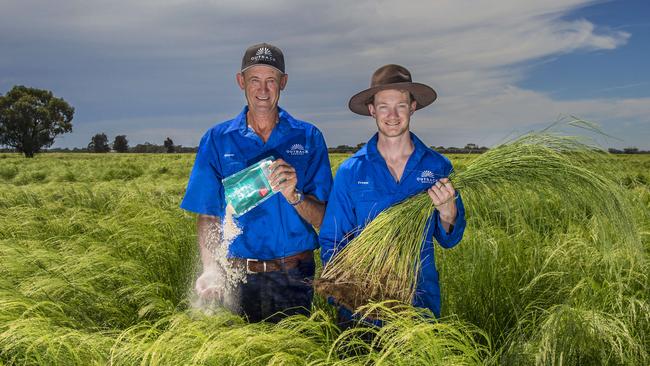
“When we first found the teff seed we’d never heard of it before,” Fraser says. “Even though we did a lot of research there wasn’t much information on agronomy so we had to figure it out for ourselves.”
The McNauls are in their third season of commercial teff production, growing on 100 hectares of their 1820-hectare property at Wakool, near Deniliquin in the Southern NSW Riverina, where they also farm 100 Angus breeders, 2000 Merino ewes, about 800 hectares of winter crops of wheat, barley and canola, as well as 200 hectares of rice.
Teff’s growing season is short, from about December to March, and it fits between their crops of wheat, barley, corn and rice.
Last year, the father and son began processing teff to sell grain and flour through their brand Outback Harvest.
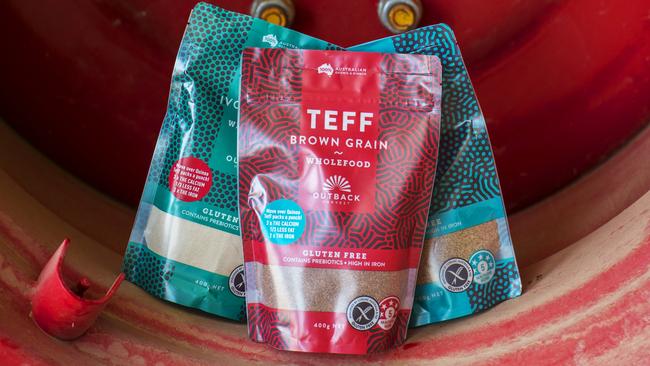
“We hope in the next few years teff will become the farm’s biggest enterprise,” Fraser says.
“We think it’s a fantastic product, we just need to educate people about what it is as many still haven’t heard of it.”
outbackharvest.com.au
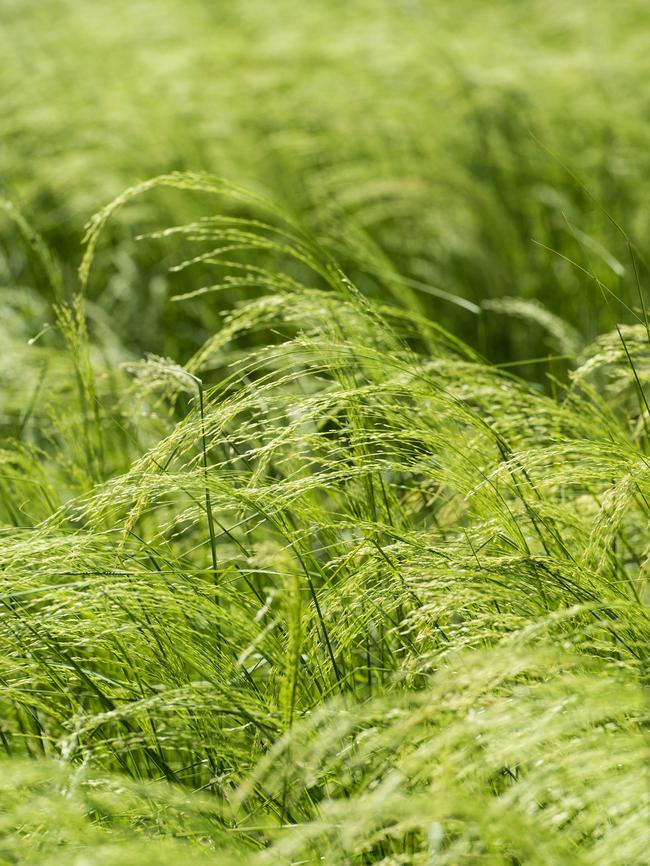
15.3g of fibre
Teff’s fibre content is high compared to other grains — as much as 15.3g of fibre per 120g of flour. It has a protein content of 10-12 per cent, similar to other cereals, and is a good source of many minerals, including iron and calcium.
10-27C
According to government research, in 2014 experimental teff crops were being grown in areas of Tasmania and near Tamworth in northern NSW. Crops in Tasmania suggest it can grow well at sea level as long as the temperature range is suitable. Its preferred temperature is 10—27C.
400g
Outback Harvest sells teff grain and flour in pouches of 400g and wholesale bags of 12.5kg or 25kg. In addition the McNauls sell teff seed to farmers in their area for fodder crops. They have also worked with the CSIRO to develop premixes for pancakes, muffins and cakes. “I’ve spent so much time in the kitchen trialling products to bake with help from my mum, Lyn,” Fraser says.
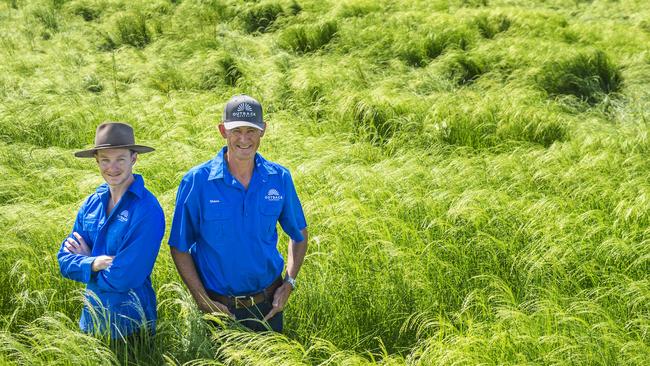
2
The McNauls grow two teff varieties: brown and ivory. “Both have a light, nutty flavour,” Fraser says. According to a grains research group, ancient grains such as teff, amaranth, quinoa and spelt are relatively unchanged by modern plant science, retaining distinctive flavours and textures.
4
After harvest, the McNauls’ teff goes through four processes before it is ready for sale. First the grain is cleaned at a processor in southern NSW; then a company transports the teff to Melbourne where it is stored; when required it is milled at a processor; and finally it is transported to a packer.
500mm of rainfall
Maximum production needs growing-season rainfall of 450—550mm, primarily during summer. In areas with hot and dry summers, irrigation is essential. Wakool’s average annual rainfall is about 400mm. The McNauls use a common irrigation technique where water is run over the surface of sloping paddocks.
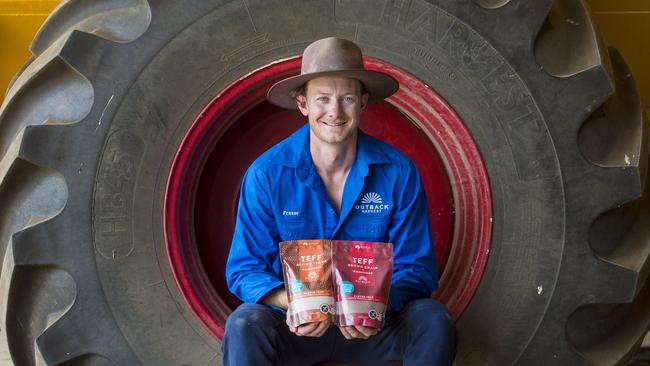
150
About 150 teff grains weigh as much as one grain of wheat. A grain of teff is tiny, measuring 0.9-1.7mm long and 0.7-1mm wide. Its colour varies from white to dark brown.
40-80cm
Teff is a self-pollinated, annual warm grass species, growing up to 80cm tall. In Ethiopia it grows best on cracking clays that can become water-logged in the wet season. Teff can grow on many soil types and tolerates soil with low pH.
12.1%
The CSIRO Healthy Diet Score 2016 report showed 12.1 per cent of Australians aren’t eating wheat or gluten. Teff is gluten-free, making it well-placed to tap into this market.
1700m
Teff is traditionally grown in the highlands of Ethiopia, where it prefers altitudes of 1700—2200 metres.
6kg
Teff crops were trialled near Brighton in southern Tasmania, where the most successful seeds were sown at a rate of 6kg a hectare. Generally, the recommended sowing rate is 3—4kg a hectare and seed must be sown shallowly — up to 10mm. Weed control before planting is important because there are few chemicals registered for use on the crop.

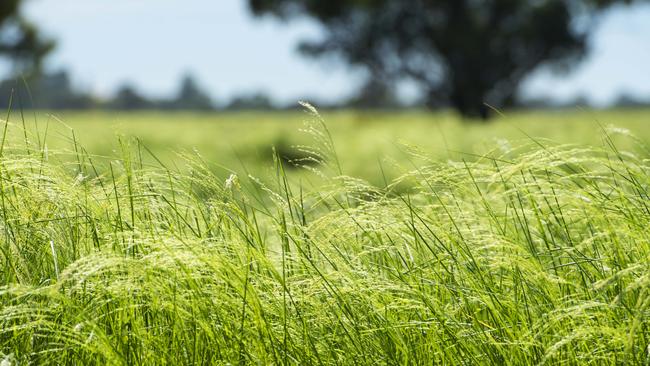
Seaweed offers new wave of feed
Dairy cattle on a seafood diet? A seaweed supplement is making a big difference to methane outputs in Tasmania.
Quality, not quantity the key to success
When it comes to award-winning crops, plant health is everything, as these Kyabram brothers can attest.